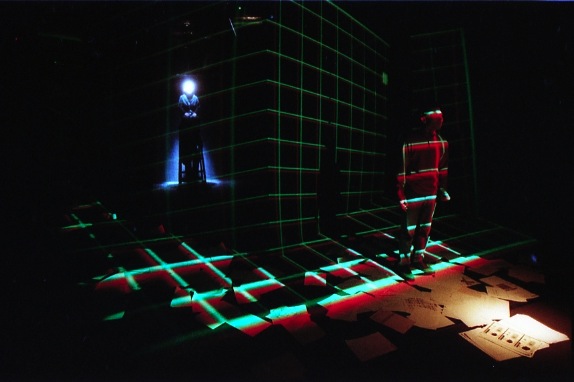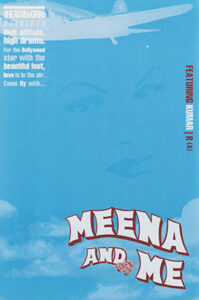



- <<
- <

- >
- >>










- <<
- <

- >
- >>
Key Words
10 Years in the Making, 13 Scenes, Alcoholism, Coincidence, Courtesan, Cultural Complexity, Extrapolation, Fragment, Gossip, Haunting, India Film Scene, Mythology, Pakistan, Patriarchy, Pride, Reproduction, Scandal, Translation, True Story, Wedding,About
The Play
Once upon a time, long ago, in a far-off land, and also right here tonight before your very eyes, a woman dances and waits for her man. She’s been weeping, and ‘are you truly here’, she says. ‘I’m truly here’, he says, and all is happiness, but not for long in the far-off one, for the dark forces of pride and patriarchy are at work. ‘Begone from here’ says the patriarch. The poor woman flees, weeping all over again and dying, but first bearing a daughter who grows up to be played by the same actress, a beautiful alcoholic with liquid eyes. But I digress. Her hair is a mess and so instead there is a look of love on a train between a man with a neat moustache and the dainty feet of the dancing girl. ‘Do not let them touch the ground’, he says, and meanwhile here tonight the woman and the man in the here and now are having a wild old time with feet and other bits. And he being a pilot, all is talk of flight and general upwards motion – after all, who doesn’t like a bit of transcendence now and then? The lovely actress from the olden days (meaning, a few years before I and maybe you were born) certainly doesn’t, although she finds hitting the bottle is not a great way to fly. Feeling her life leak out of her, she’s booked herself on a jet plane to goodness only knows where, and I have a few qualms myself – you see, my own attempts at levitation have not been 100 percent up to scratch as it were. There’s a sense of foreboding here which the dizzy lovers would do well to heed. Meanwhile, the bygone woman of the past is having a few transport-related adventures of her own, involving a big train and her own flailing limbs stuck on the track – someone’s had an accident and it’s her, but fate has saved her. She’s reunited with the neat-moustachioed man once more, and it’s a happy time doomed not to last, as the sadness of the actress reliving these moments will testify. Back in the present, things are getting a bit complex with the intervention of a third party all dressed up as the colour of the sky – but colour symbolism is new age hippy shit, so don’t go trying to reading stuff into it, we just saw it in the project shop and had to buy it – and now at this point we are poised on the cusp, as it were, of a fusion where the old and the new and the real and the bluff will commingle, where we’ll all do a favour for the actress, formerly beautiful, who incidentally is the subject of some debate. Some say ‘pathetic slut’ and others ‘she stands on her own two feet and that can’t be bad for someone in her position’, and what better way to find out than to judge for yourself? We live in a free country, after all. By watching the following dramatic presentation in the meantime, the man doing the spectacle, you will have noticed, is not the ‘help Houdini’ he thought he was since he’s needed breath, so thank goodness there was no water around and he’s wearing a lifejacket, otherwise this would have turned into a snuff show. No, I am not ‘help Houdini’, nor was I meant to be (to paraphrase T S Eliot) and will not get the girl – aw fuck!
The Woman/The Movie
Born the daughter of a Parsee actor, Meena Kumari arrived on the Indian film scene just as the glamorous style of the 40’s was being supplanted by the histrionic style of the 50’s. Her luminous beauty and quivering, melancholic performance style, combined with a whirlwind of gossip and scandal surrounding her personal life, made her a tragic heroine per excellence. Nowhere is this more evident than in the film/event ‘Pakeezah’.
Conceived of as early as 1958 by Meena’s then-husband Kamal Amrohi, ‘Pakeezah’ (The Pure One) tells the story of a girl abandoned in a graveyard who grows up to become a courtesan renowned for her dancing skills. A young man falls in love with her feet on a train, and leaves a note telling her not to let them touch the ground. The woman, Saheebjaan (Meena Kumari) is haunted by her fantasy of the man, but when a series of coincidences lead them back into each other’s arms, she is unable to overcome her unrespectable past identity and runs from the marriage ceremony. The film climaxes with Saheebjaan dancing on broken glass at the wedding of Salim to another woman. Just as it is revealed that Salim’s guardian is in fact her father, he is shot by the patriarch who originally cast out her mother. The film ends with the grotesque spectacle of a wedding between Saheebjaan and Salim in the presence of her father’s corpse.
About 50% of the film had been shot by the early 60’s, when Meera and Amrohi divorced and the film was shelved. At the end of the decade, the project was taken up once more, although by this time Meena had garnered a reputation as a man-eating alcoholic. As shooting progressed, Meena was increasingly unable to perform, and stand-ins were used for all shots apart from close-ups of her now visibly aging face. The release of the film was delayed by a war between India and Pakistan, and when it finally came out in 1972, audience reaction was muted. A few months later, Meena Kumari died of alcohol-related illness, and the film became an immediate hit. Since then, its sumptuous sets, unforgettable soundtrack (sung by the ‘Nightingale Of India’, Lata Mangeskhar) and the mythology surrounding its making have guaranteed ‘Pakeezah’ a cult reputation and ongoing popularity.
Tags
Printed Matter
Click on thumbnails to view high resolution files.
Related Programmes
Writers’ Lab Month – Playwriting Workshops, Dramatised Readings, 24-Hour Playwriting Competition & Prize Presentation (2018)

View details


The Continuum: Beyond The Killing Fields

View details
Showing 1 programmes
Meena And Me

View details





